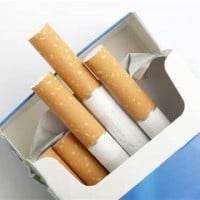Top 10 Dangerous Carcinogens
The meaning of the word carcinogen means a particular substance that's known to cause cancer/increase chances of getting cancer.
Prime example of a common carcinogen mainly found in sunlight known to elevate chances of getting skin cancer in extended periods of exposure time, even causing harm in small concentrations. Other known complications consists of sunburn, and potentially causing cataracts & other various adverse effects specifically to the eyes & skin, including immune system as well. While it's a good source of vitamin D and other benefits to the body, it's also harmful at the same time if exposed in long periods of time.
One of the most harmful carcinogens found in oils, gasoline, etc. And is mostly responsible for the production of various chemicals and pesticides that is Benzene. Most of this substance is consumed via tobacco smoke & vehicles mostly, other sources as well but often in small amounts. Exposure to this substance increases risks for certain cancers and other health complications, specifically harming the bone marrows, and potentially various vital body functions; any concentration of this substance is harmful to health, including tiny amounts of concentrations is considered hazardous in both humans and animals. Prolonged exposure can possibly lead to ultimately death via severe complications regardless of the concentration level.
One of the most produced substances in the industry, is found in everyday food and beverages such as coffee, artificial flavors, and a wide range of other everyday various sources including inside buildings; though, generally not very toxic in low concentrations, but long-term exposure may lead to some complications raised at certain concentrations, typically triggering common symptoms; in higher concentrations, it may lead to more serious complications such as fatigue, IQ loss, and multiple organ damage. It's also shown to be associated with certain cancers & having the capability to damage DNA.
This type of carcinogen is considered poisonous often found in various food in very low concentrations - most commonly on rice, seeds, and grains such as wheat; therefore, it should be known this type of carcinogen can potentially disrupt development and cause cancer when exposed. Considering it's a very carcinogenic substance, types of toxins in relation to this substance such as "aflatoxin b1" are even capable of penetrating skin. This substance is often consumed in relatively low doses with no effects; in very high concentrations, severe health complications are expected to occur. Those who are more curious, the name is originated from aspergillus, a very toxic mold that produces this carcinogenic substance.
Harmful substance commonly used in various construction materials. Inhalation of asbestos dust is famously known to cause harmful effects in health in all forms of this substance; classified as a dangerous substance, not only it causes lung cancer but a lung disease called asbestosis, caused by exposure of the substance often in high concentrations and/or prolonged exposure, which effects mostly consists of scarring of lung tissues accompanied by coughing & shortness of breath; responsible for further accelerating chances of lung cancer. Fortunately, the use of asbestos is banned in most countries, though still in presence on older structures.
Stands for tris (1,3-dichloro-2-propyl) phosphate. This is a chemical that's mostly used as flame retardants & pesticides. Often applied to furniture & various products; as it is commonly used around various countries especially USA, it is found on anywhere specifically on dense urban areas. TDCPP is known for causing adverse health effects, birth defects, significantly reduced sperm count, increased chances of cancer, affecting development in both animals & humans; this only affects individuals who've been long exposed, and/or those who've been exposed to concentrated doses of this chemical.

It is widely known that smoking tobacco is harmful to health, as it contains over thousands of chemicals with many of them classified as carcinogens, when exposed to tobacco smoke, it causes a wide range of health problems, diseases as well as not only responsible for causing lung cancer, but also applies to varieties of cancers. It's a known fact that a billion, (or over a billion individuals) have smoked at some point of their lives in the world's population. Tobacco & smoking is responsible for causing million(s) of deaths worldwide annually, making it one of the main causes of death that is preventable.
Popular material used in most various everyday products (I.e paint, wood, smoking products), and in construction. The use of this substance is mass-produced to the point that this substance is almost unavoidable, present everywhere; traces of formaldehyde is also found in space. Fortunately, low consistent doses from this substance are generally not toxic; though, in higher concentrations, it may lead to moderate health consequences (I.e difficulty breathing, coughing.) Research says this substance is known to cause certain cancers in prolonged exposure; blood cancer specifically, which is a higher risk for those working at industry workforces.
Considered as one of the most mass produced & hazardous substances in such great concentrations to the point it has been banned in most various countries due to inconsistent care of the substance, therefore harming both animal wildlife & humans significantly; considered as a very harmful substance, exposure symptoms commonly consists of tremors, ataxia, convulsions, and multiple problems specifically relating in the eyes as well as causing cancer.
Classified as a toxic carcinogen typically used for pesticides, but also found in the ocean; if consumed in certain concentrations, it may potentially cause irritability, and may cause some certain cancers in humans in prolonged exposure, but the effects applies more to various animals specifically to rodents; considered fatal in animals if consumed in higher doses.